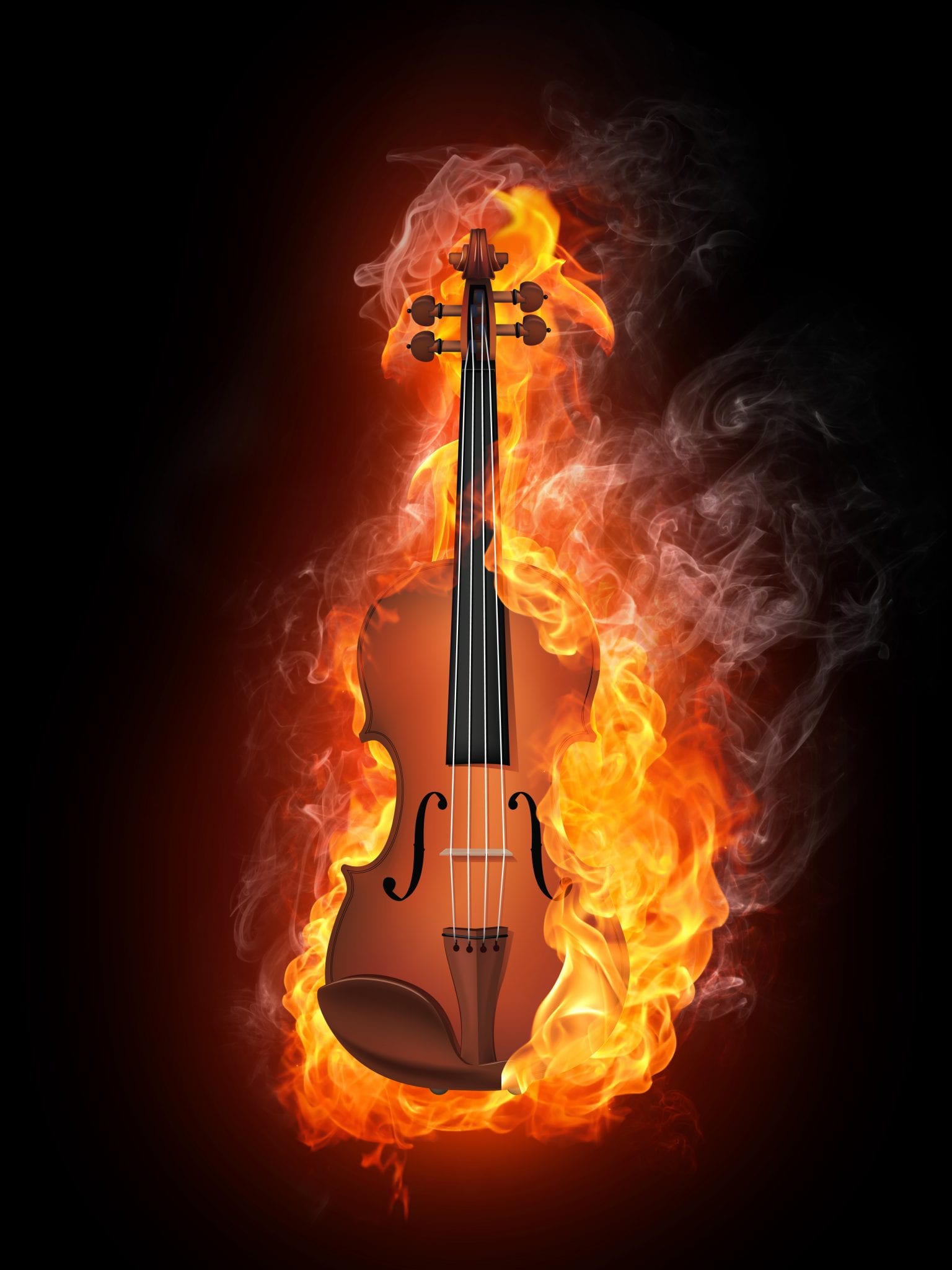Uncle Hokum’s Fiddle (v. 2.0)
for solo violin
Instrumentation
solo violin
Uncle Hokum’ s Fiddle is a fun, virtuosic solo violin “fiddle” piece with a Blue Grass flavor – think “Wieniawski meets Orange Blossom Special!” – commissioned for the 2013 Irving M. Klein International String Competition. The title comes from two main sources. The word “hokum,” which basically means nonsense, bunk, or something silly, and also used in theater to describe some sort of stage gimmickry designed to elicit a crowd pleasing response from a jaded audience. The second source is hokum, or “double shuffle” bowing, as heard in country fiddling pieces such as Orange Blossom Special. While writing the two violin version I did a small rewrite in the slow section of the solo piece, which is reflected in the title. It’s now “version 2.0”.
Uncle Hokum has been championed by violinists Ariel Horowitz, Youjin Lee, Kevin Lin, Karen Bentley Pollick, Wyatt Underhill, and Yanghe Yu.
Uncle Hokum’s Fiddle is also available transcribed for viola and a new two violin version has been commissioned by Karen Bentley Pollick (Uncle Hokum’s Fiddle for two violins).
Program Note
Back in 2013 when I was commissioned by the Klein International String Competition to write a solo violin piece, I thought it would be an enjoyable challenge to write a fun and flashy “encore piece.” The title, Uncle Hokum’s Fiddle, came from two main sources. The first is the word hokum, which basically means nonsense, bunk, or something silly. It was also used in theater to describe some sort of stage gimmickry designed to elicit a response from a jaded audience. Perhaps a… crowd pleaser? The second source is a type of bowing typical of virtuosic country fiddling pieces: hokum bowing (also referred to as the “double shuffle”). Check out Orange Blossom Special as an example of this “trick bowing.” Uncle Hokum’s Fiddle was meant to be a challenging-yet-fun showstopper fusing concert and fiddle music for a solo performer. It was “Wieniawski meets Orange Blossom Special.”
Why Version 2.0? Fast forward to 2021 and friend/violin virtuoso Karen Bentley Pollick asked if I would reconceive the piece for two violins. Karen and fellow virtuoso Philip Brezina are the perfect pair for this piece since both move back-and-forth effortlessly between the classical and fiddle worlds. Since Karen knew the solo version, I kept the solo part mostly intact, and added a rhythmic second fiddle accompaniment part, full of characteristic bluegrass fiddle “chopping” for Philip. Casey Driessen, Oriol Saña The Chop Notation Project (https://www.caseydriessen.com/chop-notation-project) is an invaluable resource on all things chop. I ended up expanding Hokum in the two-violin version, making the previously static central Calm section into more of a slow blues, and reharmonizing some of the wild romp section near the end. I’ve decided to incorporate aspects of these changes into the solo violin version. Plus, with the additions of Karen’s bowings and editorial markings, a new version was warranted.
The opening of Uncle Hokum’s Fiddle is based on the typical hokum bowing pattern, with its syncopations and double stops, and now has a chopping accompaniment. It is built on a variant of the tried-and-true blues chord progression. It is metrically “malformed” in ways that echo how the syncopated hokum pattern normally plays against its solid quadruple meter.
The middle section features broken octaves, chromatic motion, and virtuosic flourishes exploring the upper register of the violin. After all, this began as a competition piece. A developmental section, based on the opening’s hokum material, follows. The original Calm section, set in the solo violin’s upper register, has now been expanded and explicitly articulates the slow blues it had hinted at. It is a welcome relief from all the previous motion and separately bowed notes. But it is based on nothing more than a slowed down, simplified version of the opening material (now heard in the 1st violin).
The final section is a demonic fiddling romp picking up on the small alternating 5-6 opening blues shuffle-hokum figure where Barrel House boogie-woogie-meets-the country fiddle. There’s a hint of early Chuck Berry here. Once again, the blues progression is present in the background. There’s a flashy coda of 19th Century virtuosic ricocheted arpeggios that touches upon the middle section’s chromatic material, a final descending scalar flourish, in rhythmic unison, for both violins, and the piece is over.
Performers should bring their own interpretation to the bowing, phrasing, and timbre. Within reason, and with taste, of course, more idiomatic fiddling subtleties –slides, percussive sounds, and so forth could be added. Along those lines, I’ve created an optional foot stomping part. Don’t be afraid to dig in, make some noise, and have fun. After all: a little hokum never harmed anyone!
Originally, I thanked the exceedingly gracious violinists Debra Fong and Robin Sharp for their invaluable assistance with the solo Klein version in my program note. Now I must thank Karen Bentley Pollick and Philip Brezina for there enthusiasm and wisdom, Karen for her expert advice, and for “asking” the two violin version into existence!
Uncle Hokum’s Fiddle was commissioned by the Irving M. Klein International String Competition and was premiered during the semifinalist round of the 2013 Klein Competition on June 8, 2013, in San Francisco, CA. The 2-violin version was premiered on February 26, 2023 as part of the Virtuosos De Camara’s Fiddlefest with Karen Bentley Pollick and Philip Brezina, violins.
Score Preview
Listen
NB: the audio you hear is the original v. 1
